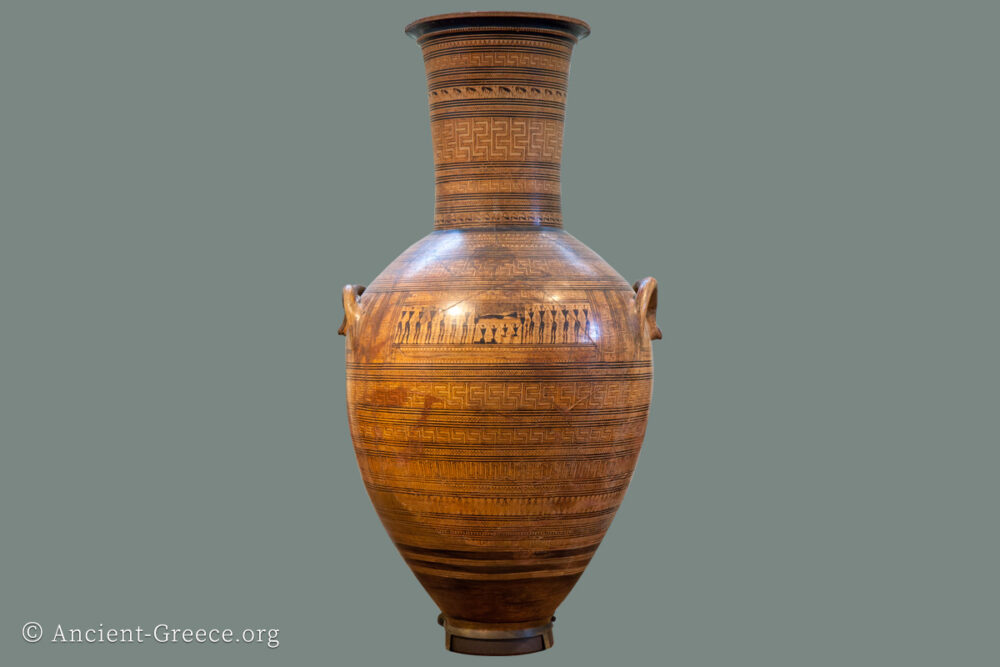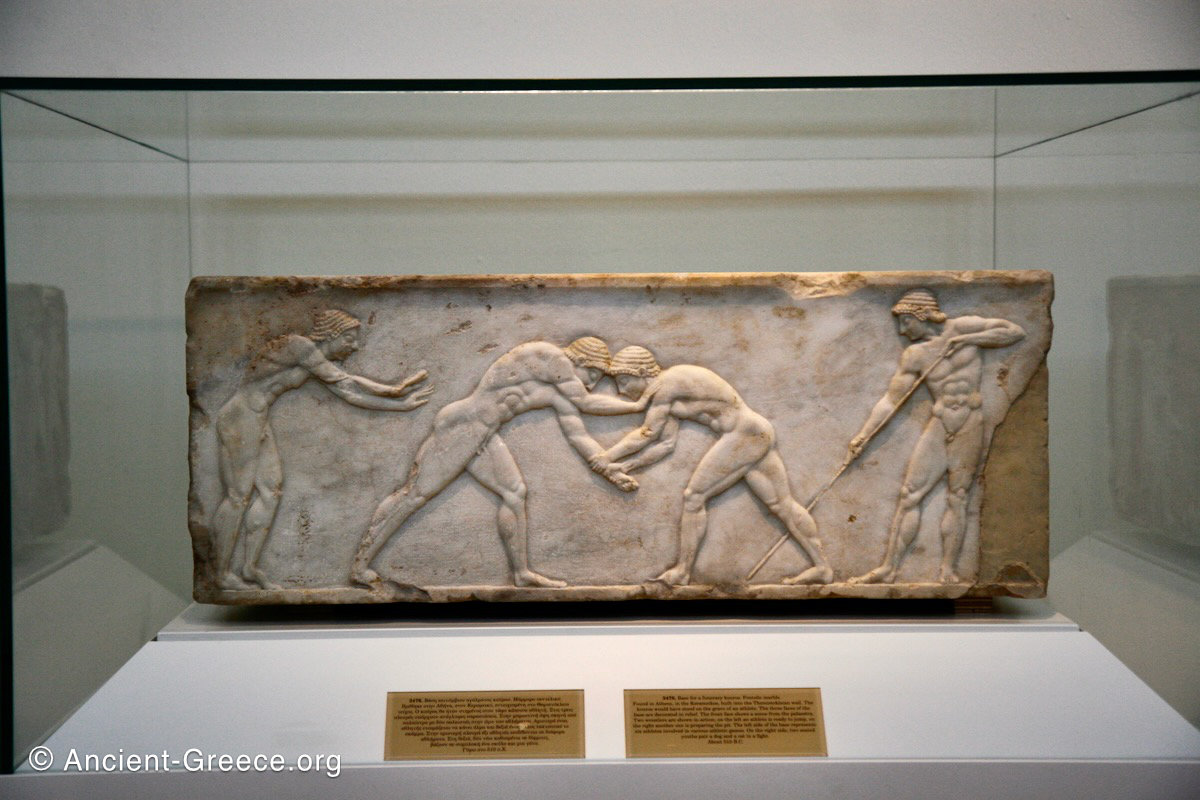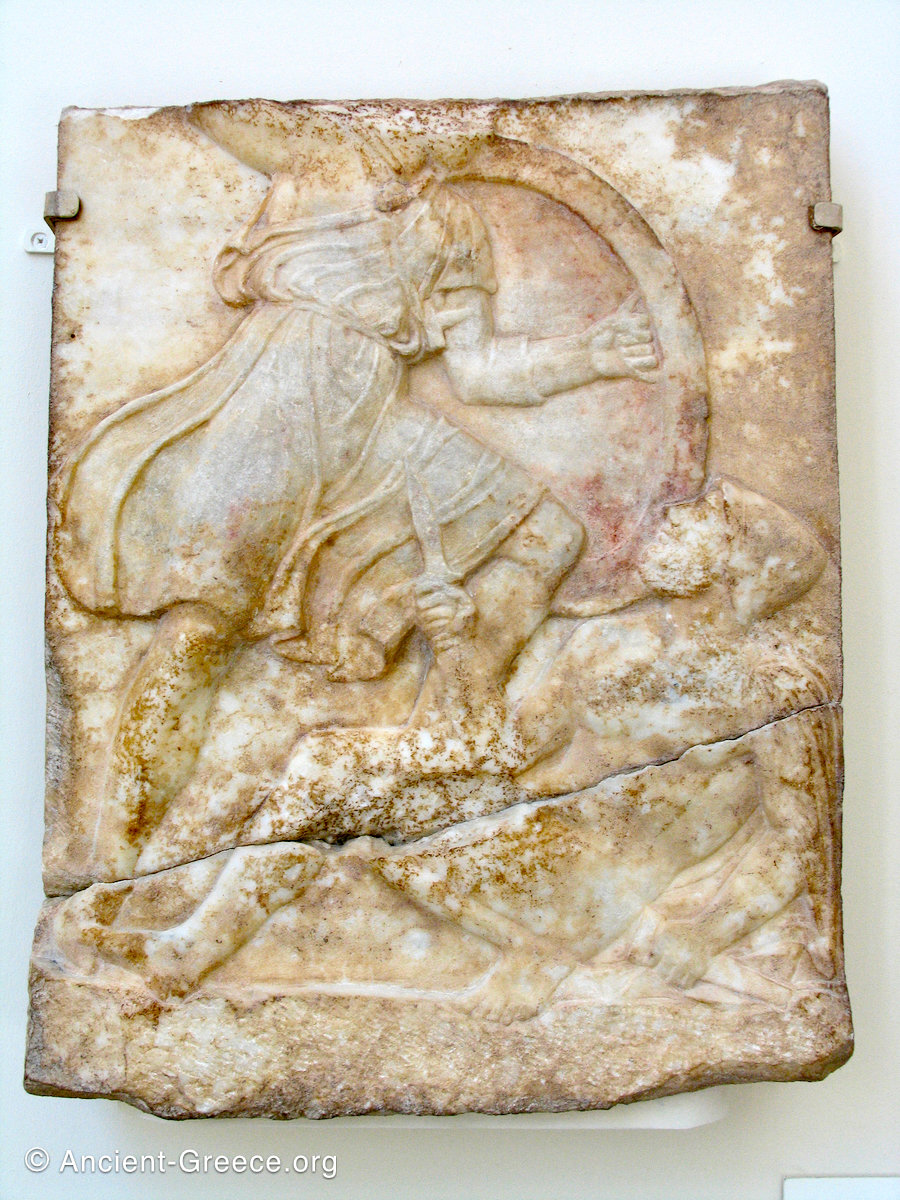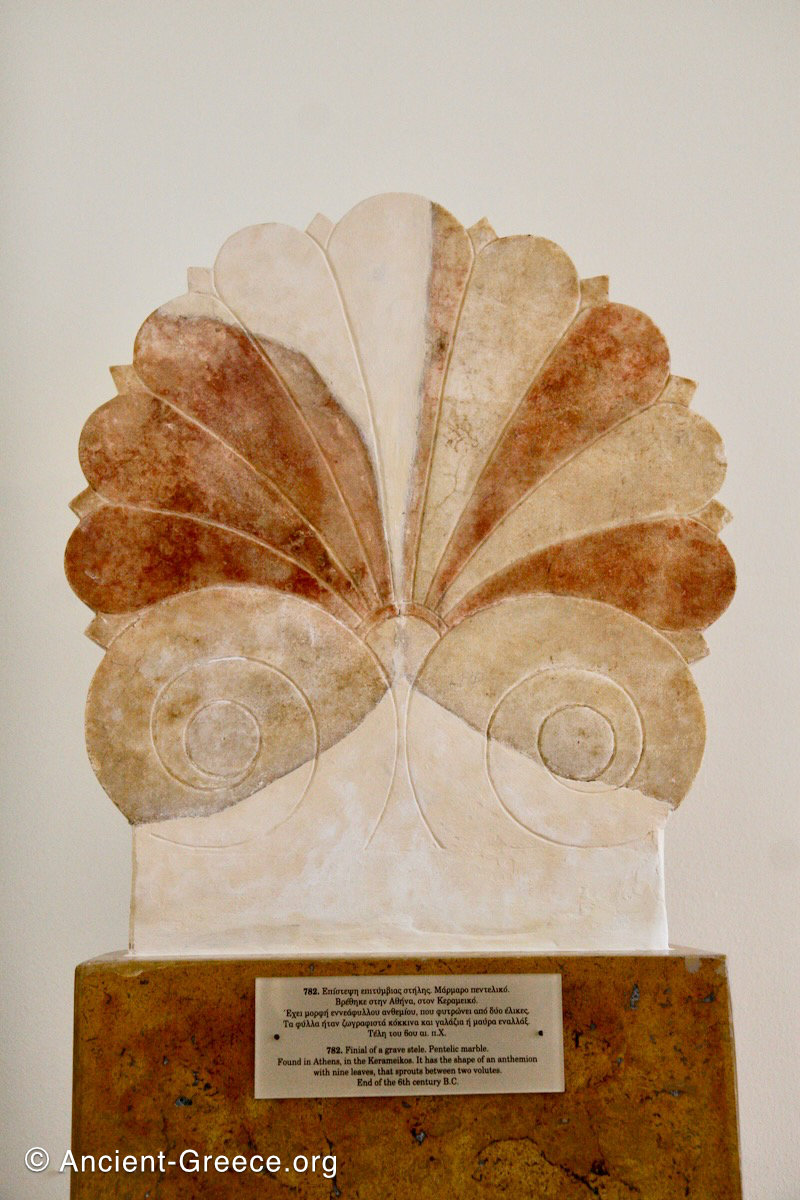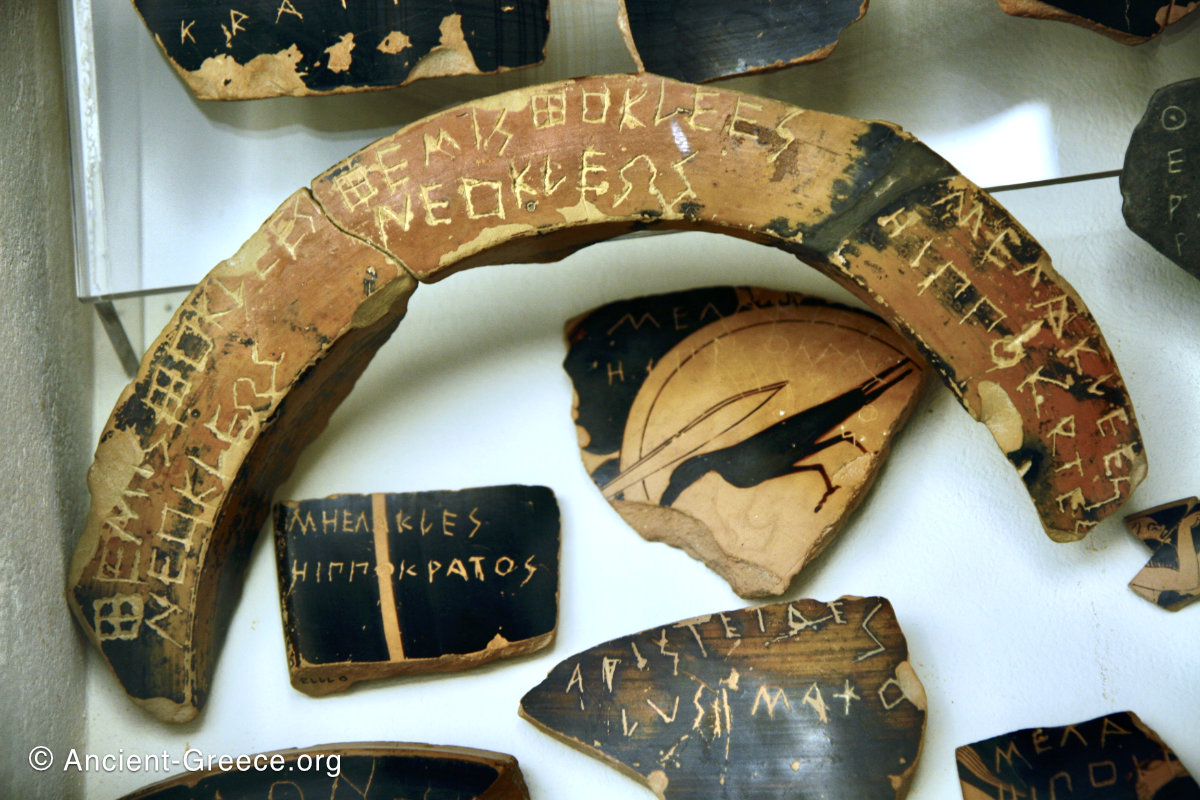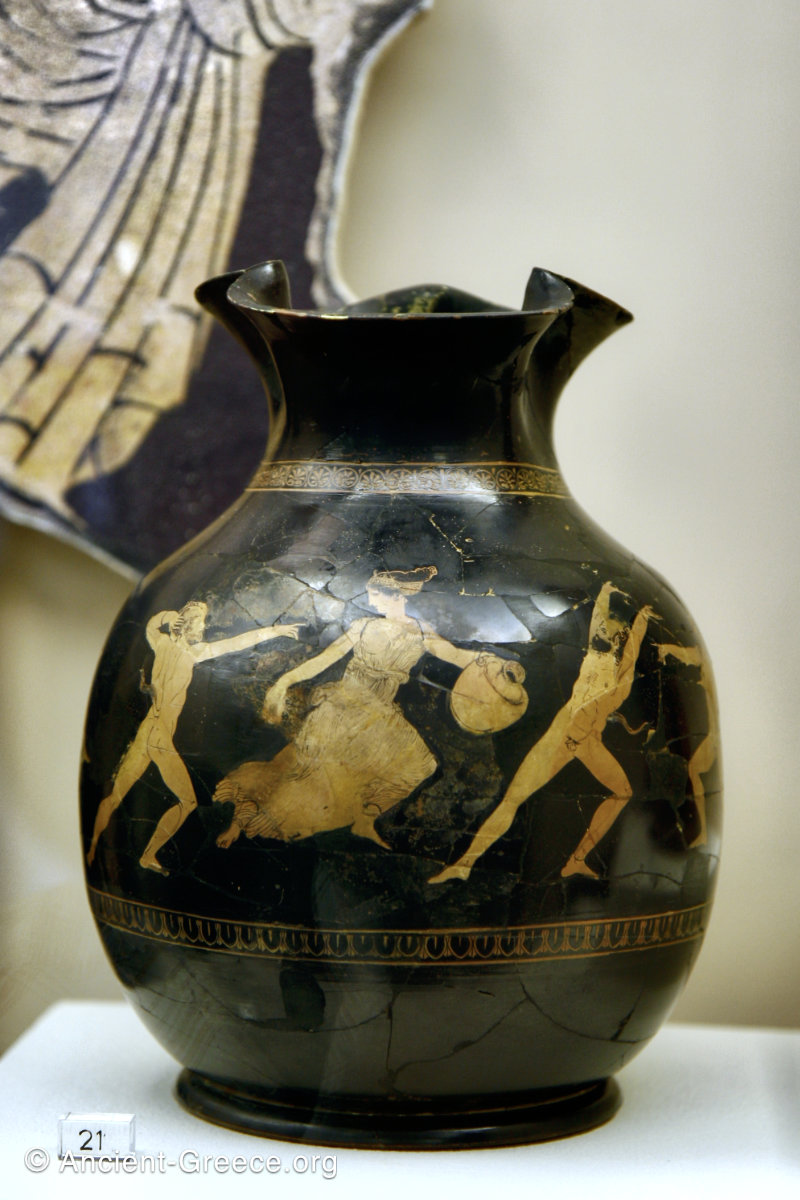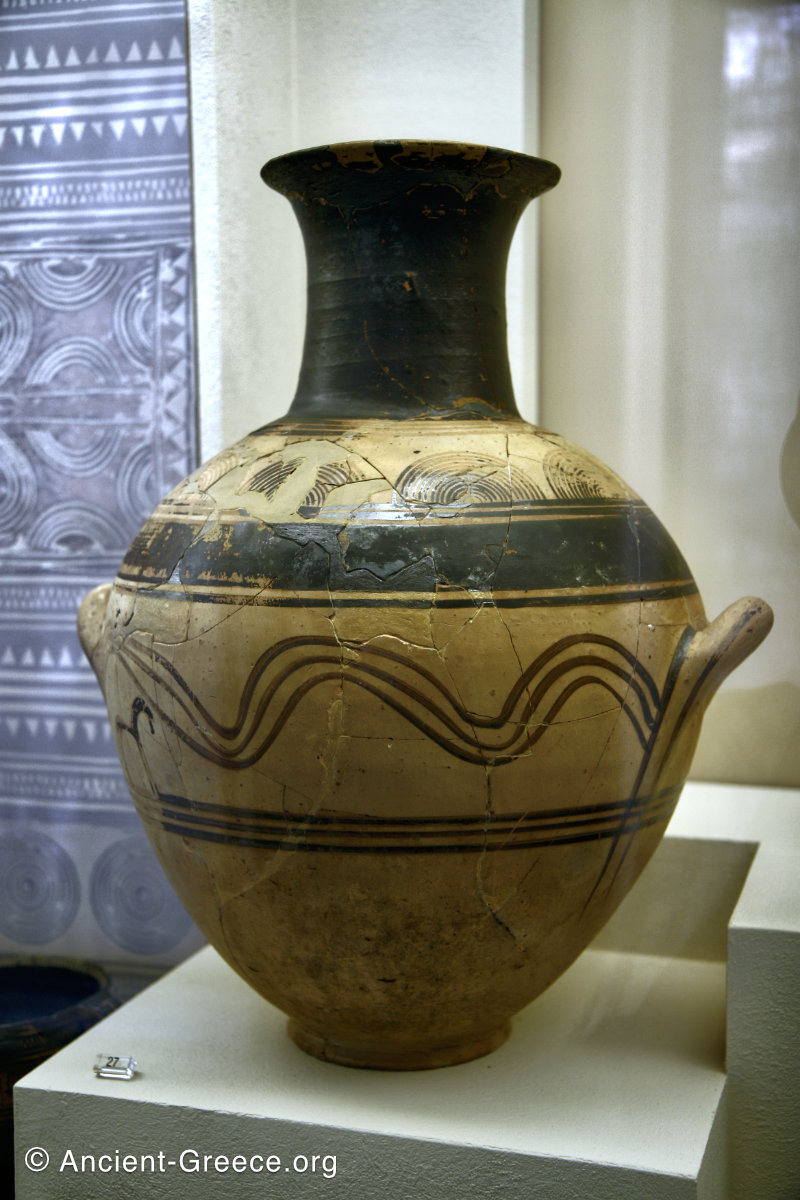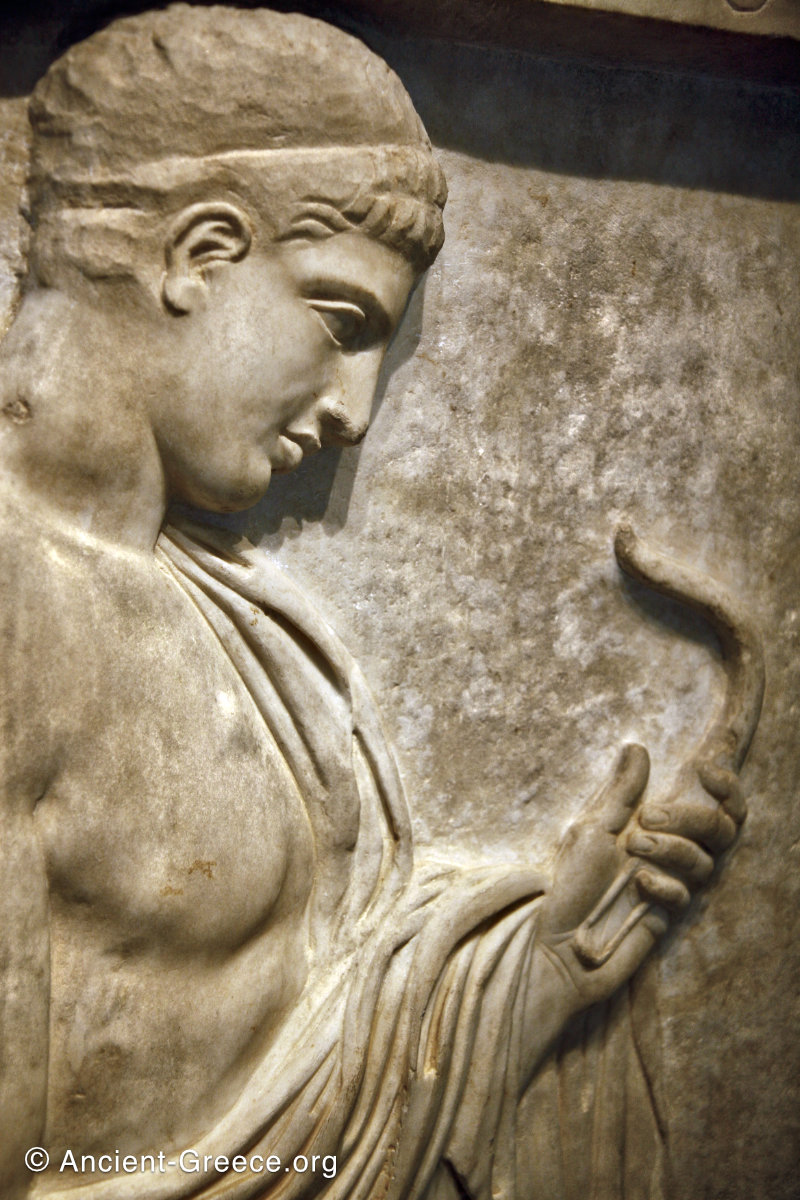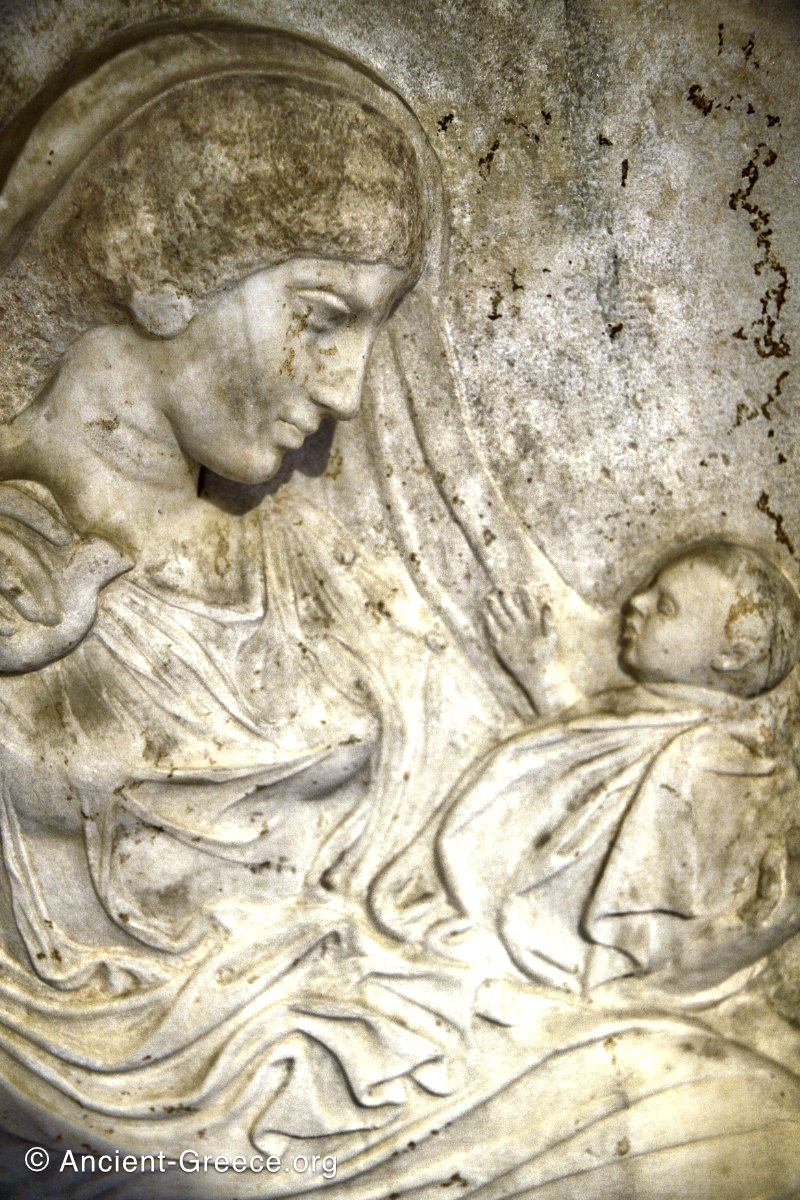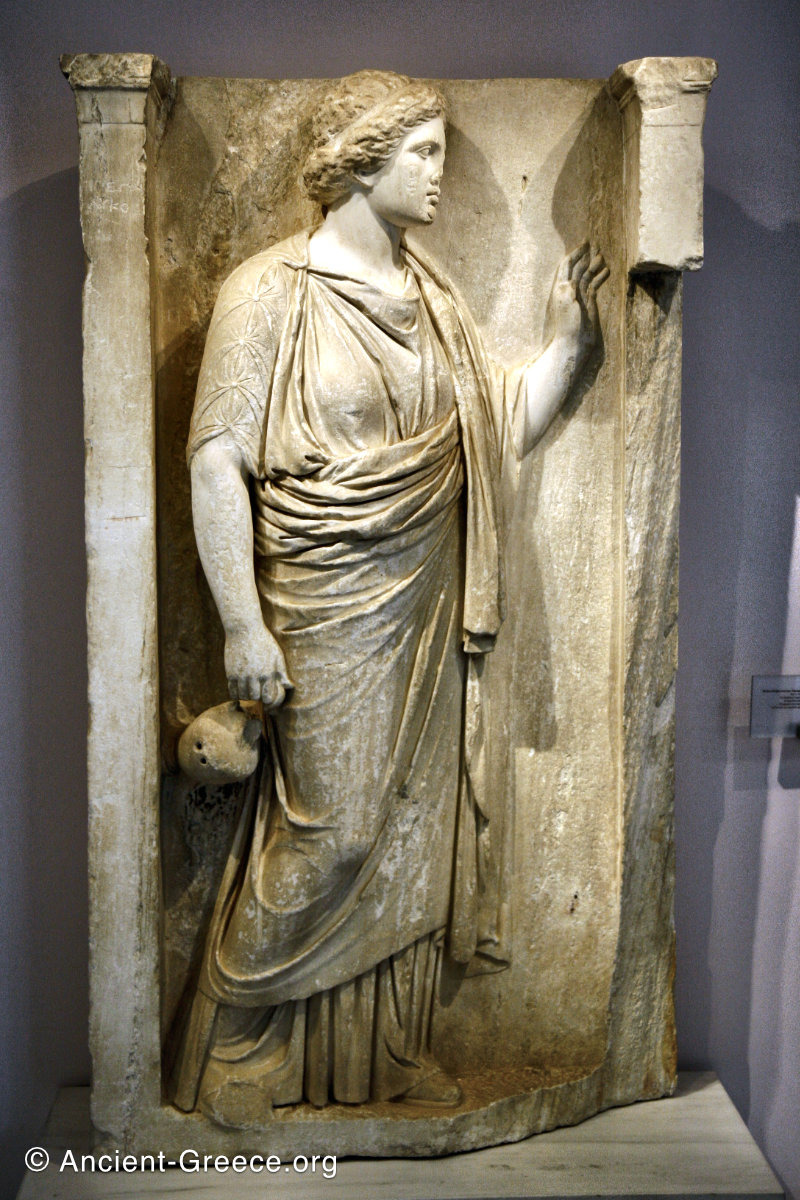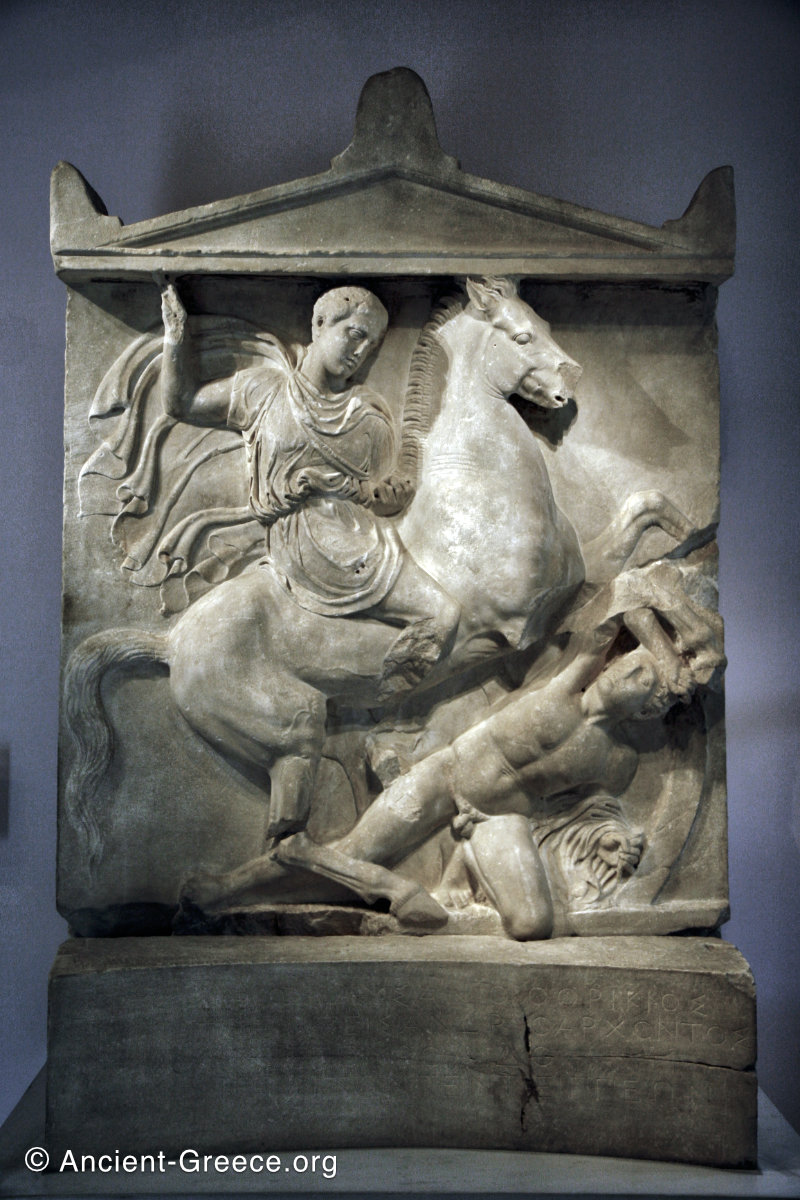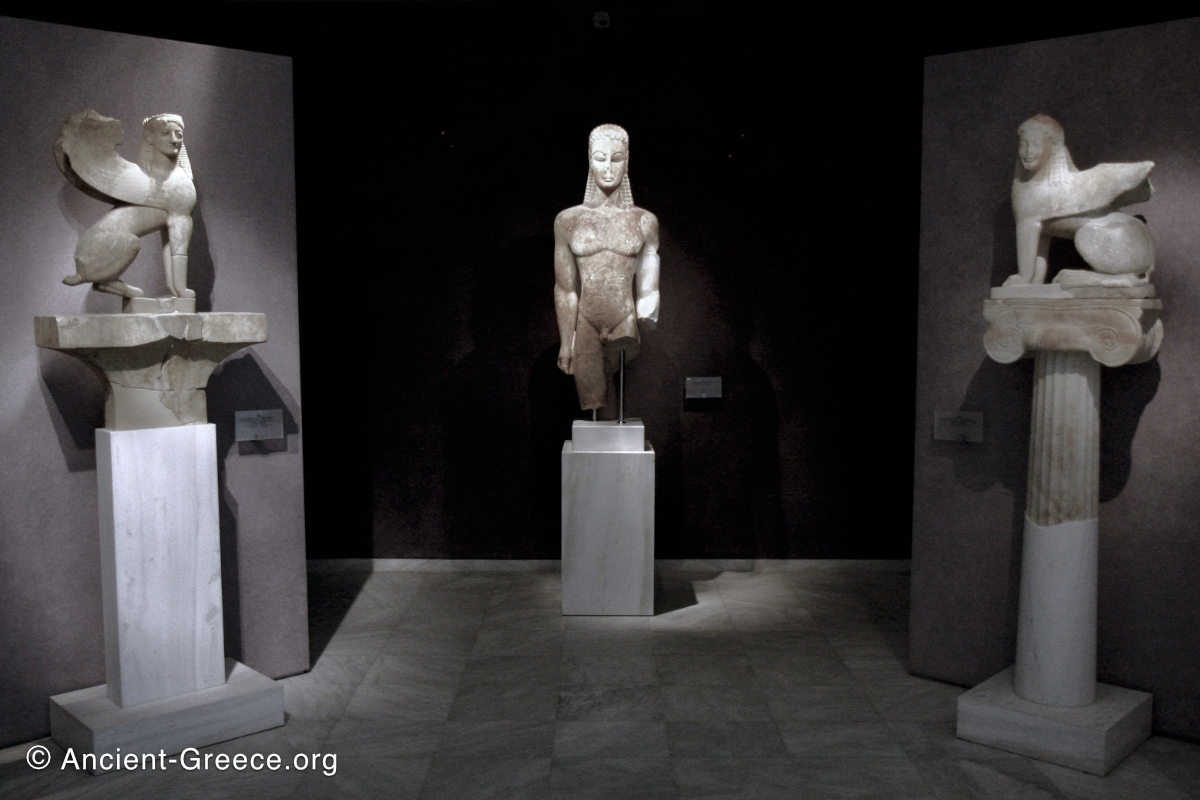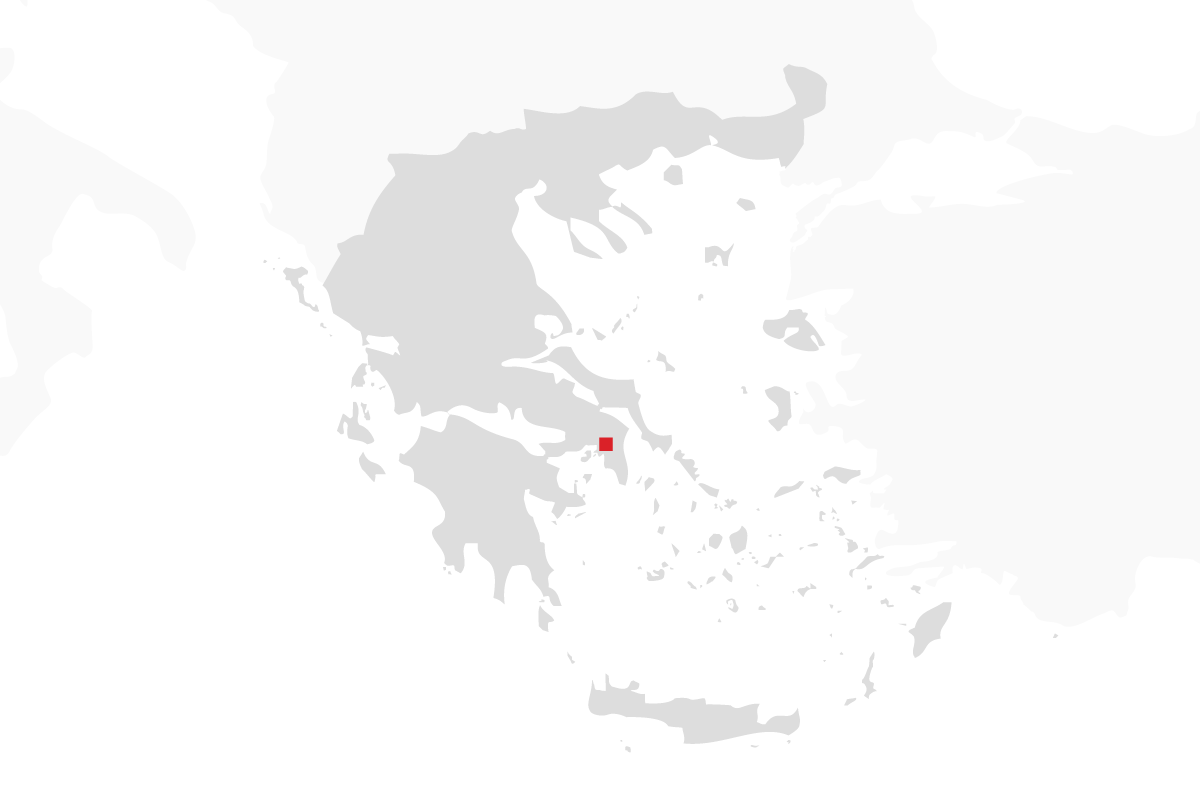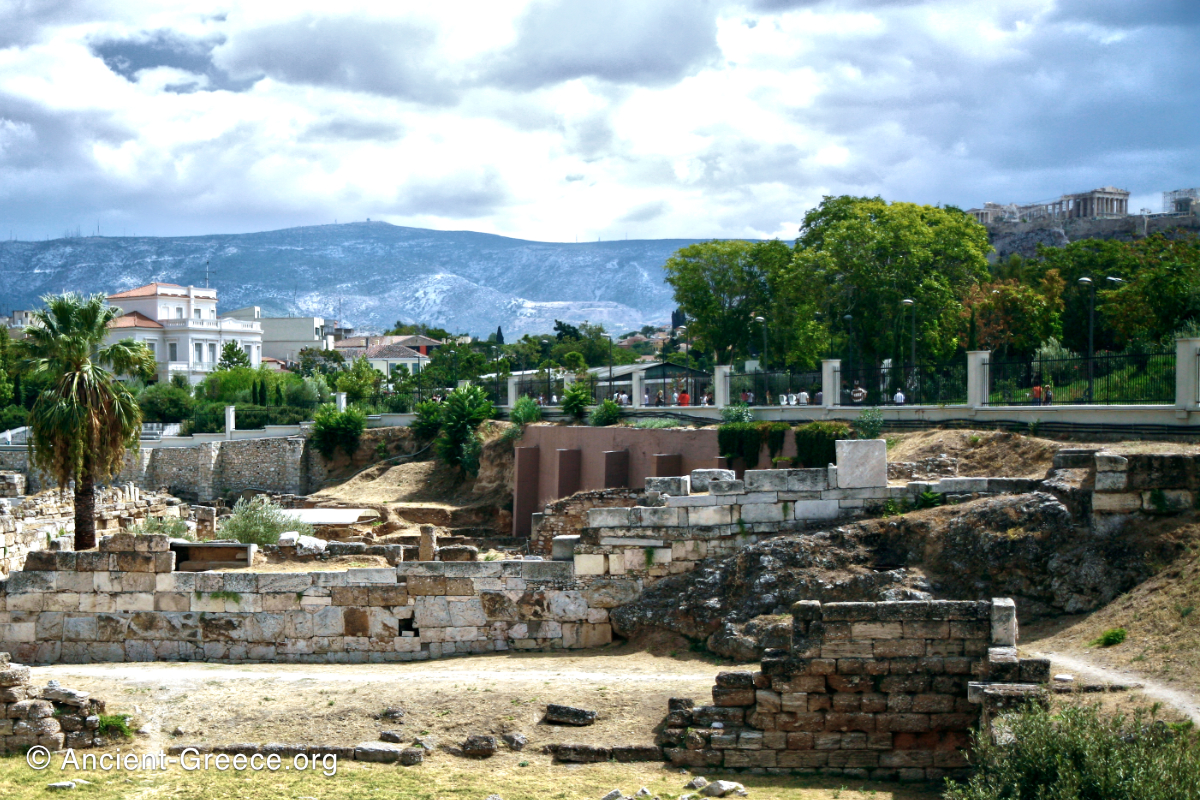
On this page:
Kerameikos (Κεραμεικός, Ceramicus) is the area of ancient Athens where the potters had their workshops. The English word “ceramics” derives from this area.
Today, Kerameikos is an important archaeological site northwest of the Agora and the Acropolis.
It is the location of two important city gates, the Dipylon and the Sacred Gate. The latter straddles the Sacred way and the Eridanos river. The Sacred Way passes through the ancient cemetery of Athens at Kerameikos.
Important artifacts from excavations in the area are exhibited in the Kerameikos Archaeological Museum, on the grounds of the archaeological site, and in the National Archaeological Museum in Athens.
Dipylon and Sacred Gates
Kerameikos is the location of two important gates in the Athenian defensive wall: They Sacred Gate, and the Dipylon.
The two gates are close to each other, separated by the Pompeion. The Sacred Gate took its name from the Sacred way, the Eleusinian mysteries procession road. The river Eridanos (Ἠριδανός) runs through the Sacred gate.
Roads and Buildings
Kerameikos archaeological site is sprinkled with the stone foundations of buildings and roads along the banks of the river Eridanos (Ἠριδανός) that runs parallel to the Sacred Way for a bit out of the city gates.
Leaving the city via the Sacred Gate would have led a person through the sacred way which evolved into a typical cemetery road, with family grave monuments flanking its banks.
Conversely, leaving via the Dypilon gate would have been through a wide processional way. The way into the city from the Dypilon gate is the famous Panathenaic way. A large public fountain was available at the gate, immediately to the left for those entering the city.
A large building buildings is between the Sacred Gate and the Dypilon: the Pompeion.
The Pompeion had a peristyle courtyard where the preparations were made for the Panathenaic procession. It was destroyed by Sulla in 88 BCE. Subsequently, a three-isled building, the Building of the Warehouses, was built in its place.
Kerameikos Cemetery
Kerameikos is home to the most ancient, and largest cemetery of Athens.
As it was customary in antiquity, the cemetery extended outside the city gates along the most important roads, in this case along the Sacred Way.
Today, a variety of graves and monuments from different eras across a thousand years stand in the tranquility of tree covered hills flanking the Sacred Way.
The cemetery is nestled in quiet hills and shaded by pine trees. It is sprinkled with grave monuments of various types, the most important of which are shielded in museums, such as the Archaeological Museum of Kerameikos, and in the National Archaeological Museum in Athens.
Highlights of excavation finds
